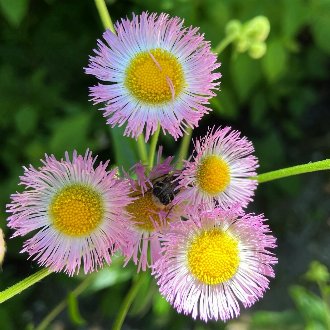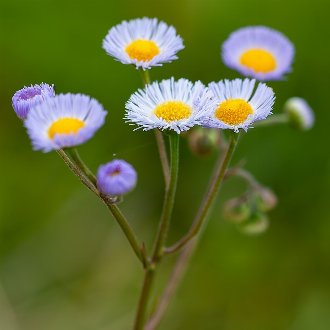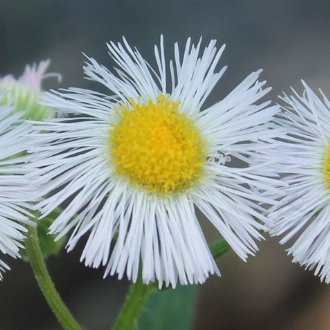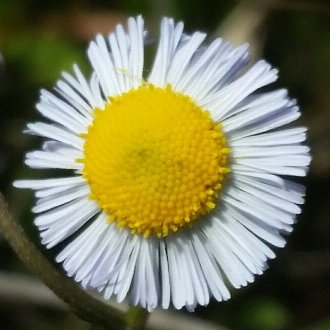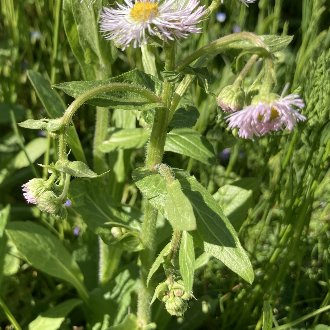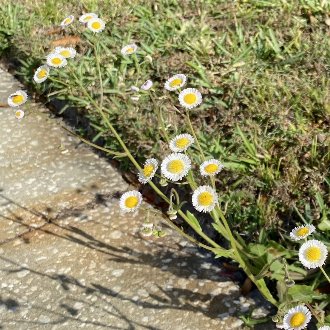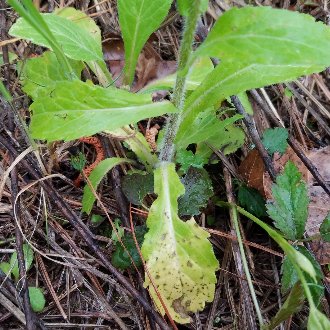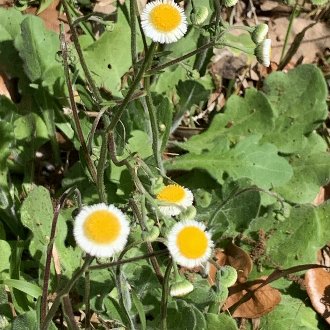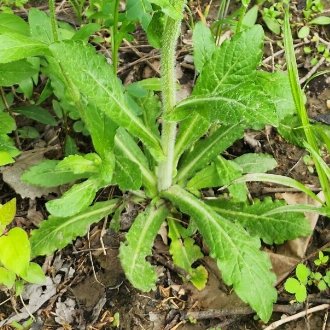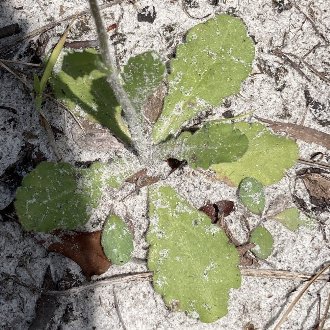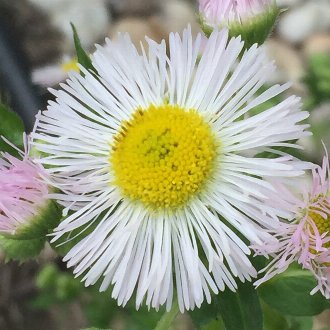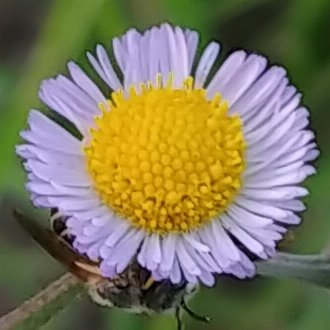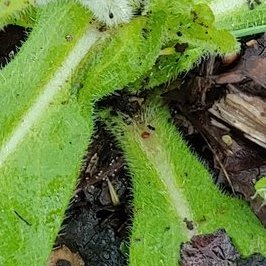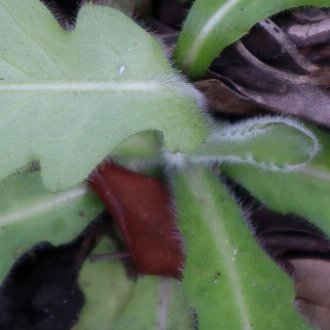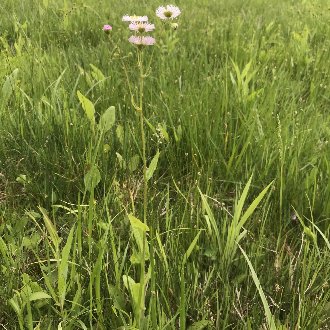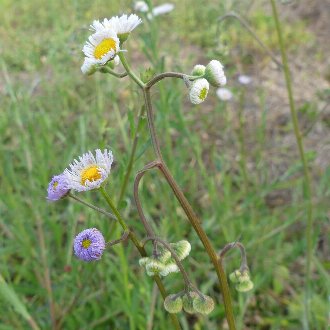Philadelphia Fleabane vs Oakleaf Fleabane
These two species can be confused in their relatively narrow range of overlap. Both are found on moist sites, both tend to have a dense rosette of basal leaves of roughly similar size, and both have narrower, more numerous rays than other fleabanes. Because many of the characteristics used to distinguish these species have significant variation from plant to plant, and overlap between the two species, it is important to look at multiple features before making an ID. E. philadelphicus ranges much farther north and west, and prefers richer, finer-textured soils, whereas E. quercifolius is restricted to the southeastern coastal plain, ranges farther southeast, through all of peninsular Florida, and prefers sandy soils.
Philadelphia Fleabane (Erigeron philadelphicus) | Oakleaf Fleabane (Erigeron quercifolius) |
A common and widely-distributed biennial or short-lived perennial of moist sites, native across North America. | An annual, biennial, or short-lived perennial native to sandy sites in Florida and nearby portions of the Atlantic and Gulf coasts. |
Flowers may be white or pink. When not white, they average a more reddish hue. Photo © Liz Smith, CC BY 4.0. | Flowers may be white, pink, or blue. When not white, they average a more bluish hue. Photo © Richard Stovall, CC BY 4.0. |
Flowers have more numerous (150-250, rarely to 400), slightly narrower rays. Photo © Violet T., CC BY 4.0. | Flowers average fewer (100-150, occasionally to 250), slightly wider rays. Photo © Jay Horn, CC BY 4.0. |
Upper portion of stems still have leaves; leaves are only slightly reduced in size, and some plants have robust leaves directly under the inflorescence. Photo © Tanya Riseman, CC BY 4.0. | Upper portions of stems are mostly devoid of leaves, either with none at all, or a few, greatly reduced leaves. Photo © Karen Guin, CC BY 4.0. |
Basal leaves may persist at flowering, but leaves often wither when plants are flowering. Photo © Leila Dasher, CC BY 4.0. | Basal leaves are usually persistent and not withering while the plant is flowering. Photo © Claire Herzog, CC BY 4.0. |
Prefers rich, loamy to clayey soils that tend to support more lush deciduous vegetation. Photo © Kaden Slone, CC BY 4.0. | Prefers sandy soils that tend to support pine flatwoods with a sparser understory. Photo © Jade Fortnash, Public Domain. |
Rays average significantly longer (5-10mm), leading central disc to look smaller relative to flowerheads. Photo © Mark Eanes, CC BY 4.0. | Rays average significantly shorter (2.5-6mm), leading central disc to look larger relative to flowerheads. Photo © Gilles Deacur, CC BY 4.0. |
Basal leaves average less densely pubescent. Photo © Ryan Sorrells, CC BY 4.0. | Basal leaves average more densely pubescent. Photo © brycelee, CC BY 4.0. |
Stems are usually completely straight until the inflorescence, where unopened flowerheads sometimes nod, the stem only curving very close to each flowerhead. Inflorescence is more compact. Plants may be slightly taller (to 80cm) but most plants are in the zone of height overlap between the two species. Photo © Alex Goodfriend, CC BY 4.0. | Stems may be straight, but are more likely to lean slightly. Inflorescence is more irregular and wide-spreading, with long, sometimes curving branches on some plants. Plants average slightly shorter (to 60cm.) Photo © Valerie Anderson, CC BY 4.0. |
Additional Notes
The differences in growth habit and pattern of withering of leaves at maturity reflects the habitat differences in these two species. E. philadelphicus tends to inhabit rich habitats with more competing vegetation, so by the time of flowering, its basal leaves are more likely to be shaded by other vegetation, and thus the plant loses little by shedding these leaves, and needs to grow taller, straighter, and rely more on leaves higher up the stem in order to photosynthesize. E. quercifolius, on the other hand, inhabits habitats with less undergrowth, and thus can rely on its basal leaves, without growing as many leaves higher up. Its stems do not need to grow as tall, and can sprawl more. Because it relies more on its basal leaves and grows in more barren habitats, E. quercifolius tends to grow more pubescence on these leaves to protect them from herbivory and reduce water loss.References & External Resources
These short lists show only links helpful for ID. For a complete list of references and resources also covering other aspects of ecology, visit the links section of the full article on each plant, which is the first entry here.



